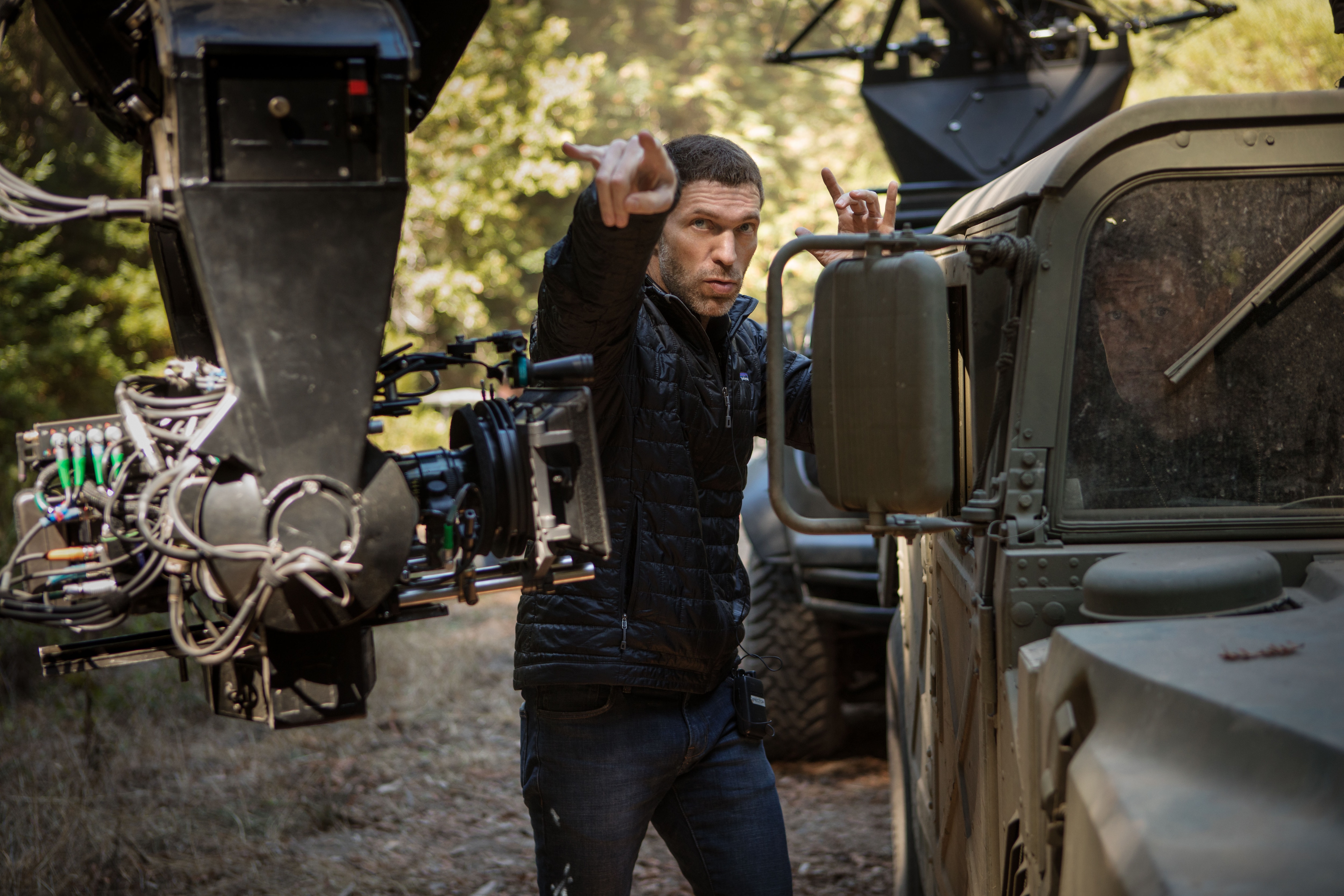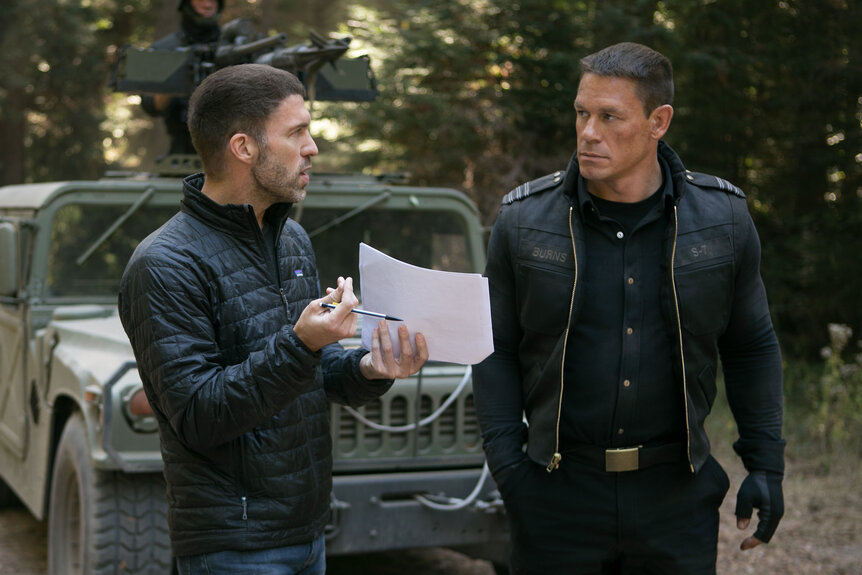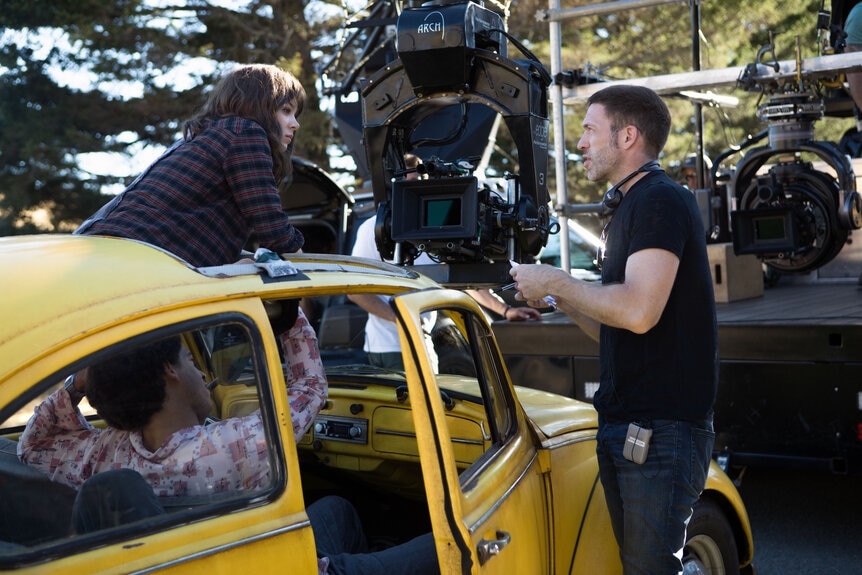Create a free profile to get unlimited access to exclusive videos, sweepstakes, and more!
How Laika stop-motion contributed to Bumblebee's critical success

When you’re interviewing folks about a movie and you want to find out the nuts and bolts of how it got made, there’s usually no better person to ask than the director. That’s certainly the case with Bumblebee’s Travis Knight, who, bolstered by his Laika CEO and stop-motion experience, helmed to great effect the first of presumably many standalone Transformers movies, despite his own misgivings about being qualified to do so.
As the son of Nike founder Phil Knight, it would have likely been easy for Travis to enter the family business, or at least be comfortably shoed for the rest of his life. But instead, the younger Knight just did it his own way in the lost art of stop-motion animation, eventually becoming head of Laika Studios in Portland, and directing Kubo and the Two Strings to 2017 Oscar noms for Best Animated Feature and Best Achievement in Visual Effects.
That was apparently quite the calling card, as even before Kubo came out, Knight was getting calls to switch mediums. While promoting Bumblebee’s home entertainment release, Knight took the time to chat with SYFY WIRE about making the big switch to live action, how being a studio head himself helps to deal with studios, and if we’ll ever see that Dinobots movie we’ve been pining for so hard.
Why live action now? Why’d you get out of your comfort zone a little bit?
Travis Knight: When I released Kubo, actually before that, when the trailer for Kubo came out, people started approaching me about working on live action films. It’s never been something that's been a burning desire for me to do – I love stories, I love telling stories, I love making movies… I love it in the medium that I've devoted most of my life to, which is stop motion and CG and hand-drawn animation. And I'd be very happy doing that for the rest of my life.
When the folks at Paramount, the producers, approached me about essentially directing a Transformers movie I was shocked, I was surprised, and I thought for sure they’d mistaken me with somebody else, just because if you look at the Transformers films in the past, those aren't the kinds of movies that I make.
But, once it became clear to me that Paramount and the producers wanted to take the franchise into a different direction, to tell different kinds of stories within this mythology, I got excited, because I was a guy who grew up in the '80s, I was a kid who played with Transformers, I watched the cartoons, I played with the toys, I read the comic books. And so to be able for me to apply all the stuff that I’ve learned working in animation over the last two decades to these characters I've known and loved since I was a kid and make this big franchise movie, it was a real challenge but it was also really exciting. And anytime I felt like that in my career, where I felt like I’m about to do something that freaks me out but I’m excited by, that's when I feel like I’m going to do something that’s meaningful.
How did you find your stop-motion background helpful?
Part of working in stop-motion specifically is that you've got to have a ton of organization, of discipline, of forethought ... you have to plan things out, because you can't shoot any coverage in stop-motion; every single frame is essentially precious, you have to know what the shots are, what the intention behind them is, everything has intentionality.
So I think approaching live action with that kind of precious discipline actually benefited me a great deal, because I knew going in every single day, even if it was a kind of experience that I’d never done before — working in water, or setting off pyrotechnics on a set, or doing a car chase, something I’d actually never done before working in live action — I knew exactly what I wanted, exactly what I needed to tell the story that I wanted to tell.
Was it strange not wearing your studio-head hat?
No, it wasn't strange, but it also meant that I understood — having run a company, having run a studio, having been a producer — to be in a situation where I'm directing for a company, for a series of producers, it meant that I understood oftentimes where they were coming from even if I didn't necessarily agree with where they were coming from.
Yeah, certainly there were times I wish I could have been master of the universe and could have done exactly what I wanted to do, but you know, look: being in a situation where you have to defend your own ideas is a good thing, it forces you to examine if you're making the right choices, if there's a better idea for something, or to reconsider something that maybe was a lazy choice.
Was Bumblebee always going to be the first standalone, solo Transformers flick? Was that something you had a decision in, or was the script all ready to go for you?
The script was absolutely not ready to go when I came on board, it was in development. But pre-dating my involvement in the franchise, Paramount and the producers set up a writer’s room where they try to hash out ideas, so as instead of treating the Transformers as a series of one-offs and sequels, they try to think more broadly about the canvas that they were painting on. So they assembled a writer’s room with a bunch of great writers, including Christina Hodson, who was the screenwriter for Bumblebee and hatched a lot of these different ideas.
I think the studio and Steven Spielberg took a real shine to the idea of a Bumblebee movie, and then it was about "what Bumblebee movie are we telling?" Christina came in with some really great ideas from the outset, and then we nurtured it and developed it over time and then made a movie. And I think we're all very, very pleased with the response, but at the beginning, you don't know how the world is going to respond to a Bumblebee spinoff movie, and thankfully they embraced it.
Was there a lot of talk about maybe instead going with Blaster?
[Laughs] As far as I know, there was no talk of going with Blaster, or Astrotrain, for that matter.
Were there any Transformers that you wanted to put into the film that you didn’t get to?
Oh yeah, I mean when we did the opening scene on Cybertron, that was complete kid-like wish fulfillment, that was the nine-year-old me trying to throw all of his toys into the sandbox and playing with them at the same time. So obviously because of time and budget there's only so much you can do, and I only had 25 shots to tell that story. But I basically put all of my childhood favorite Transformers into that scene. There were still a few I couldn't shove in there… I wanted Jazz in there, I desperately wanted Jazz. And I really did actually want Megatron in there at some point, but you know you have to make choices, and those kind of things were sort of outside the realm of the story that we were telling.
Do you have a dream project that would be live-action?
I've got a million dream projects, Adam. it's just a matter of time and actually convincing people to let me do it.
Will you do a Dinobots movie?
[Laughs] I don't know, I don't know! Grimlock is not the most articulate of guys, but neither was Bumblebee, so I'm sure there's a good Dinobots movie in there somewhere.
Bumblebee, directed by Travis Knight, is now available on all home entertainment formats. No word yet on when that Dinobots movie is coming.
















